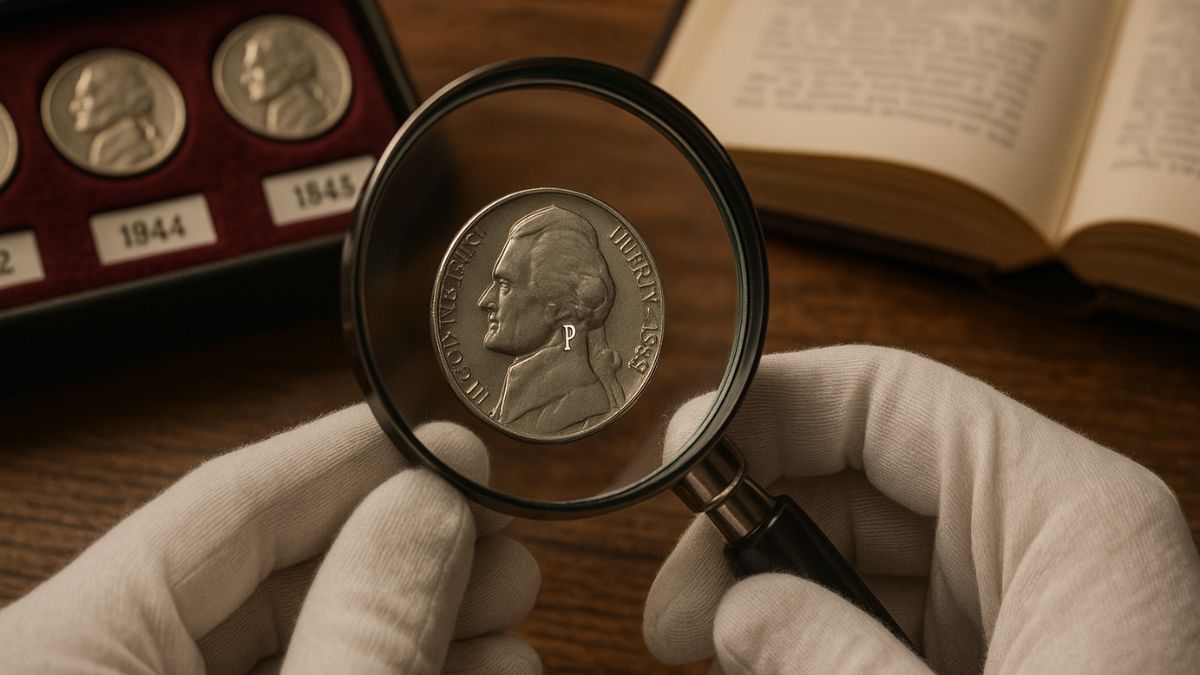In recent years, 1942–1945 Silver Jefferson Nickels, commonly known as War Nickels, have experienced a significant surge in value.
These coins, minted during World War II, are not only rich in history but also in silver content, making them highly sought after by collectors and investors alike.
This article delves into the reasons behind their increasing value, providing detailed insights, facts, and figures.
Historical Background
The Birth of the War Nickel
During World War II, nickel was a critical material for military applications, particularly in the production of armor plating.
To conserve this essential resource, the U.S. Mint altered the composition of the Jefferson Nickel.
From 1942 to 1945, the coin’s composition changed from 75% copper and 25% nickel to 56% copper, 35% silver, and 9% manganese. These coins are known as War Nickels.
Distinctive Features
To distinguish these coins from their predecessors, the U.S. Mint introduced a large mintmark above Monticello on the reverse side of the coin.
Notably, this was the first time the letter “P” was used as a mintmark on a U.S. coin, representing the Philadelphia Mint.
Composition and Specifications
The unique composition of War Nickels contributes significantly to their value.
- Composition: 56% Copper, 35% Silver, 9% Manganese
- Weight: 5.000 grams
- Diameter: 21.2 mm
- Edge: Plain
- Designer: Felix Schlag
The inclusion of 35% silver not only gave these coins intrinsic value but also made them a tangible connection to a pivotal era in American history.
Mintage Figures
Understanding the mintage figures provides insight into the rarity and potential value of these coins.
| Year | Mint | Mintage |
|---|---|---|
| 1942 | P | 57,900,600 |
| 1942 | S | 32,900,000 |
| 1943 | P | 271,165,000 |
| 1943 | D | 15,294,000 |
| 1943 | S | 104,060,000 |
| 1944 | P | 119,150,000 |
| 1944 | D | 32,309,000 |
| 1944 | S | 21,640,000 |
| 1945 | P | 119,408,100 |
| 1945 | D | 37,158,000 |
| 1945 | S | 58,939,000 |
Note: The 1943-D nickel has the lowest mintage among the War Nickels, making it particularly valuable to collectors.
Current Market Value
Melt Value
As of May 20, 2025, the melt value of a single War Nickel, based on its silver content, is approximately $1.87.
Collector Value
The collector value of War Nickels varies based on condition, rarity, and specific mintmarks.
- Circulated Condition: Typically range from $1.50 to $5.
- Uncirculated Condition: Can fetch between $7 to $80, depending on the specific coin and its grade.
- Rare Varieties: Coins with errors or unique features can command prices upwards of $1,000.
Factors Driving the Value Surge
Rising Silver Prices
The intrinsic silver content in War Nickels makes them sensitive to fluctuations in silver prices. As silver prices rise, so does the base value of these coins.
Historical Significance
Being minted during a significant period in history, these coins serve as tangible artifacts from World War II, increasing their desirability among collectors and history enthusiasts.
Limited Supply
With the passage of time, the number of War Nickels in circulation has decreased, making them scarcer and, consequently, more valuable.
Notable Varieties and Errors
Certain War Nickels are particularly valuable due to unique features or errors.
- 1943/2-P Overdate: A rare variety where the “3” in the date was struck over a “2”.
- Repunched Mintmarks: Some coins exhibit mintmarks that were struck more than once, creating a distinct appearance.
- Full Steps: Coins with fully defined steps on Monticello are rare and highly sought after.
Investment Potential
Given their historical significance, silver content, and increasing scarcity, War Nickels present a compelling investment opportunity.
Collectors and investors are advised to seek coins in the best possible condition and to be aware of the specific varieties that command higher premiums.
The 1942–1945 Silver Jefferson Nickels are more than just currency; they are pieces of history. Their unique composition, historical context, and increasing rarity make them a valuable addition to any collection or investment portfolio.
As interest in precious metals and historical artifacts continues to grow, so too does the value of these remarkable coins.
FAQs
How can I identify a War Nickel?
A War Nickel can be identified by the large mintmark above Monticello on the reverse side of the coin. Additionally, these coins were minted between 1942 and 1945 and have a composition of 35% silver.
Are all 1942 nickels made of silver?
No, only the nickels minted in the latter part of 1942 have the 35% silver composition. Early 1942 nickels retained the pre-war composition of 75% copper and 25% nickel.
What is the best way to store War Nickels?
To preserve their condition and value, War Nickels should be stored in a cool, dry place, preferably in acid-free coin holders or albums designed for coin storage.

